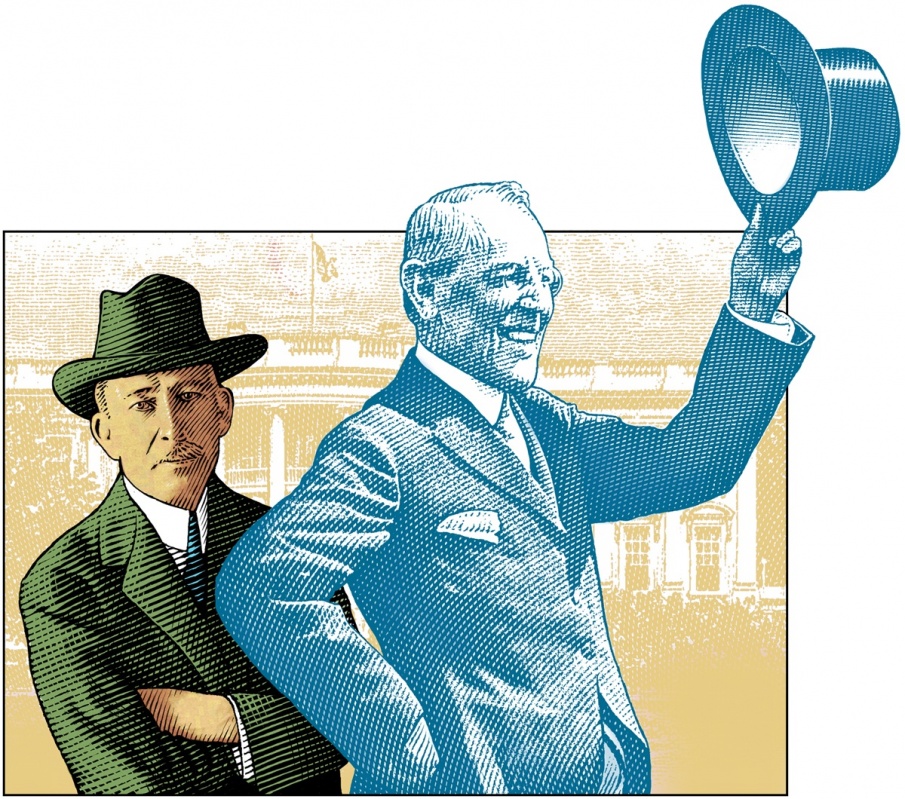When the first world war ended November 11, 1918, the man representing the United States abroad was an unassuming Texan named Edward Mandell House. He held no office beyond his status as the president’s close friend and adviser, but he was in Paris with all the authority Woodrow Wilson could confer.
House’s national and international influence grew from a political career that took shape after he moved in 1886 to Austin from Houston, where his wealthy father served as mayor. House played a role in the re-election of Gov. James Hogg in 1892, and Hogg bestowed upon him the honorary title of “lieutenant colonel.” Soon reporters referred to him simply as “colonel.” By 1910, the Texas political scene seemed too confining, and House moved to New York, hoping to exert political influence on the national stage.
He met Wilson, then governor of New Jersey, in 1911. The two men hit it off immediately. During Wilson’s first year as president, he remarked, “Mr. House is my second personality. He is my independent self.”
After Wilson’s election in 1912, House became a key power. House’s behind-the-scenes role in the Wilson administration was summed up by Oklahoma Sen. Thomas Gore’s remark, “Take my word for it. He could walk on dry leaves and make no more noise than a tiger.”
When World War I broke out in Europe in 1914, House became Wilson’s personal emissary in a strenuous attempt to negotiate peace. On one visit he met with Kaiser Wilhelm. House’s biographer Godfrey Hodgson describes the event in Woodrow Wilson’s Right Hand:
“From London, on June 13, while waiting to see British officials, House reported: ‘I had a most interesting visit to Germany. I have never seen the war spirit nurtured and so glorified as it is there.’ ”
After the United States entered the war in April 1917, Wilson and House continued to work for a settlement, based on Wilson’s Fourteen Points, which included a League of Nations. The challenge for Wilson and House was to secure an armistice that would mean defeat for Germany while moderating the harsh terms demanded by Great Britain and France.
According to historian Margaret MacMillan in Paris 1919, “The armistice with Germany … was made in a three-cornered negotiation between the new German government in Berlin, the Allied Supreme War Council in Paris and Wilson in Washington. House, as Wilson’s personal representative, was the key link among them.”
Wilson named House as one of the five commissioners representing the United States at the Paris Peace Conference in 1919. As the conference went on, the president’s dependence on House eroded, due in part to the contrast between Wilson’s idealism and House’s pragmatism.
Jealousy also played a part. Wilson, a widower, had married Washington socialite Edith Galt in 1915, and she drew a tight circle around her husband. That circle did not include House. Edith Wilson, not House, became the president’s closest friend and adviser and one who, as detailed in Phyllis Lee Levin’s book Edith and Woodrow, undermined Wilson’s confidence in House.
When Wilson left Paris after the signing of the Treaty of Versailles in June 1919, House saw the president off as he sailed back to the United States. It was the last time they would meet.
Despite his estrangement from Wilson, House continued as one of the country’s most important voices in international affairs. He appeared on the cover of the June 25, 1923, issue of Time magazine.
House died in 1938 and was buried in Houston, where he had been born 80 years earlier. His elegant Austin home, once as much a center of Texas political power as the Capitol or the Governor’s Mansion, was demolished in 1967. A historical marker stands at 1704 West Ave. to mark the spot. House donated land near his home to the Austin school system, and the nearby high school football field is still named House Park.
——————-
David Latimer lives in Austin and teaches at Austin Community College.


